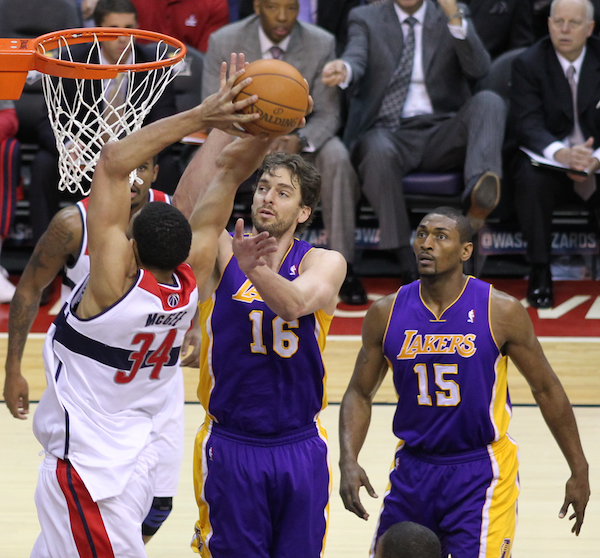Dear Sports Fan,
Can you explain basketball fouls? They seem totally arbitrary to me.
Thanks,
Otto
Dear Otto,
If we were more cynical on this website, we would say that NBA foul calls aren’t arbitrary, they only seem arbitrary because we don’t know which team the refs have gambled on!
In all sincerity and seriousness though, you are not alone. Basketball fouls are extremely difficult to read. They happen very quickly and there is often very little difference between a foul on one player or the other. Here are probably the three most common fouls to look for.
What is a Reach-in Foul?
A reach-in foul is somewhat self-explanatory. When a player tries to steal the ball from another player, he’s got to be pretty careful. If he touches almost anything other than the ball — an arm, a chest, a face, etc. — it’s a reach-in foul. And it doesn’t necessarily have to be your hand that’s reaching in — it could be any part of your arm (or all of it like in the photo to the left.
The one exception to this rule is that when someone has the ball and their hand is actually on it. When this is the case, like when dribbling or shooting the ball, the player’s hand is considered part of the ball and can be struck or slapped without penalty.
What are Charging and Blocking Fouls?
Charging and blocking are two fouls that can be called in situations that look almost identical. When you see two players collide and a whistle blows, it’s usually either of these two fouls. A charging call is always against the offensive player and a blocking foul always against the defensive player.
Charging and blocking are like the cheese plate at a party or an intersection with a four-way stop sign — it’s all about who gets there first. When two players collide the player who has the foul called on him and the one that gets the call in his favor depends basically on who got there first. If the defender got to the place where the collision was and established himself there (this part is a bit hazy; usually it means that the defenders feet aren’t moving anymore but it could also be that his torso is static even if his feet are still moving a little) before the attacking player arrived then it is a charge and the foul goes against the offensive player. If the defensive player is still moving when the collision happens then it is a block, and the foul goes against the defender.
Trying to guess where an attacking player is going and establishing yourself there so that they run into you is a pretty common defensive strategy. A player doing this is said to be “trying to take a charge.” Sometimes this strategy backfires if the defender guesses wrong or is not quick enough. Sometimes you will see what looks like a defender sliding sideways into a collision. This is a sure sign that the foul will be called a block and go against the defender… except, of course, if the ref has some money riding on the defensive team… Just kidding!
Sincerely,
Ezra Fischer

